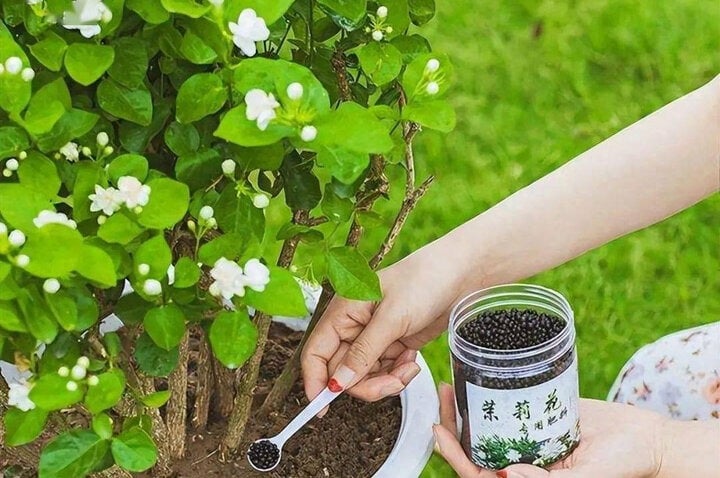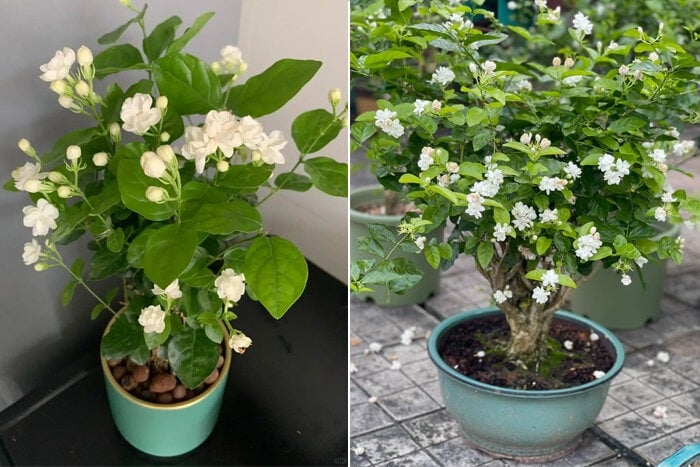Many people wonder why their jasmine plants don’t bloom as profusely as those in nurseries, and the answer lies in understanding the specific care requirements of this fragrant flower.
Jasmine is a relatively easy-to-grow plant, often used to decorate homes and gardens. However, to achieve a vibrant and fragrant display similar to the ones seen at flower markets, there are some key secrets to follow.
Secrets to Abundant Jasmine Blooms
To enjoy a lush jasmine plant with abundant flowers, consider these five tips practiced by experienced gardeners.
Provide Ample Sunlight
Jasmine loves sunlight, and the more sun it receives, the more vibrant and fragrant its blooms will be. Ensure your plant gets 6 to 8 hours of sunlight daily. The saying, “Jasmine doesn’t die in the sun, and chrysanthemums don’t die in the shade,” highlights the importance of sunlight for jasmine. Even during hot summers, as long as you provide enough water, your jasmine can soak up the sun.
If jasmine doesn’t get enough light, its branches will grow longer, but flower buds won’t develop properly. This results in fewer, lower-quality flowers with fewer petals and a less intense fragrance.

Jasmine thrives in abundant sunlight, producing more vibrant and fragrant blooms.
Ensure Sufficient Watering
Jasmine is a water-loving plant with many leaves, and it requires frequent watering, especially during sunny days. For potted jasmine, water when the top 10% to 20% of the soil is dry. It’s crucial to use well-aerated, loose soil and ensure good ventilation to prevent root rot. In addition to watering, misting the plant will increase humidity, keeping the branches and leaves healthy and glossy.
Provide Nutritional Support
Like all plants, jasmine needs adequate nutrition to thrive and bloom. Organic fertilizers are ideal for jasmine. You can use cake fertilizers, as well as the following two types of fertilizers for regular feeding:
Mixed Flower Fertilizer: This multi-nutrient fertilizer can be applied periodically every 10 days. Use a water-diluted mixture of phosphorus-potassium fertilizer at a ratio of 1:1000 or 1:1200, either poured at the root or sprayed on the leaves every 7-10 days.
Repot your jasmine annually, preferably in the spring. When repotting, add a small amount of basal fertilizer to enrich the soil. This significantly improves the plant’s blooming potential. For jasmine that has been basal-fed, subsequent fertilization will not significantly affect its growth.
Regular Pruning for Fuller Blooms
Pruning is essential to encourage fuller blooms. Jasmine flowers typically form on new branches, so the more new branches, the more flowers you’ll enjoy. Proper pruning will result in at least two new branches per pruned branch, significantly increasing the number of flowers.
Pruning After Flowering: When flowers wither, prune the branches about 1-2 cm below the wilted flower. If the branches are too long, you can also trim them to a suitable length and remove branches without buds or flowers. Typically, pruning is done at the fourth leaf from the bottom to encourage new branch growth. If your plant is too dense, remove some budless branches to improve ventilation.

Prune branches about 1-2 cm below wilted flowers to encourage new growth and blooms.
Pruning for Young Plants: Newly purchased jasmine plants will usually bloom first. After that, you can prune them like the branches mentioned above. Soon, the top two to three pairs of leaves will develop 2-3 buds. As these branches grow, they will produce flowers. If you notice any withered or yellow leaves, prune them promptly to improve ventilation and support the plant’s overall health and flowering.
Pruning for Old Plants: For older jasmine plants, the lower branches may have aged. To maintain their blooming potential, properly prune these older branches to encourage new growth. Remove long branches, inner branches, and dense, weak branches. A well-pruned jasmine will have a neat, airy shape, allowing better light penetration and improved branching, resulting in more flowers.
Controlling Plant Height
Jasmine plants at flower markets often have a uniform, compact shape with evenly distributed buds. However, when grown at home, jasmine can become unruly, with varying branch lengths and smaller flowers. To enhance the aesthetic value of your jasmine, learn how to prune it to create a fuller, more compact shape. This directs the plant’s energy towards flowering and ensures it receives adequate sunlight, resulting in more beautiful blooms.
Regular pruning will help maintain a manageable height and prevent the plant from becoming too bushy. While some people use growth retardants, exercise caution as these can cause air pollution and potentially affect your family’s health.
“Grow Water Spinach at Home with a Simple Container Garden: Enjoy Fresh, Healthy Veggies in No Time”
Growing water spinach at home has never been easier with this simple and effective method using a polystyrene box. Discover the secrets to cultivating this nutritious and delicious vegetable right in your own backyard. Whether you’re a gardening novice or a seasoned pro, this guide will teach you everything you need to know to successfully grow water spinach and enjoy its fresh, healthy goodness all year round.
Moonlight Magic: Captivating Scents and Year-Round Blooms.
Have you ever heard of the mesmerizing Epiphyllum oxypetalum, more commonly known as the Queen of the Night, which blooms regardless of whether it is day or night? This captivating flower boasts not only exquisite beauty but also an irresistible fragrance. Join us as we delve into the secrets behind this extraordinary flower and uncover what makes it so unique.
“Don’t Throw Away Those Rotten Tomatoes! 4 Fantastic Uses You’ll Love”
Don’t discard those seemingly useless overripe tomatoes! Discover the incredible benefits they can bring to your health and well-being. Uncover the secrets of these vibrant fruits and learn how they can enhance your life in ways you never imagined. It’s time to explore the unexpected advantages of these often-overlooked treasures.







































